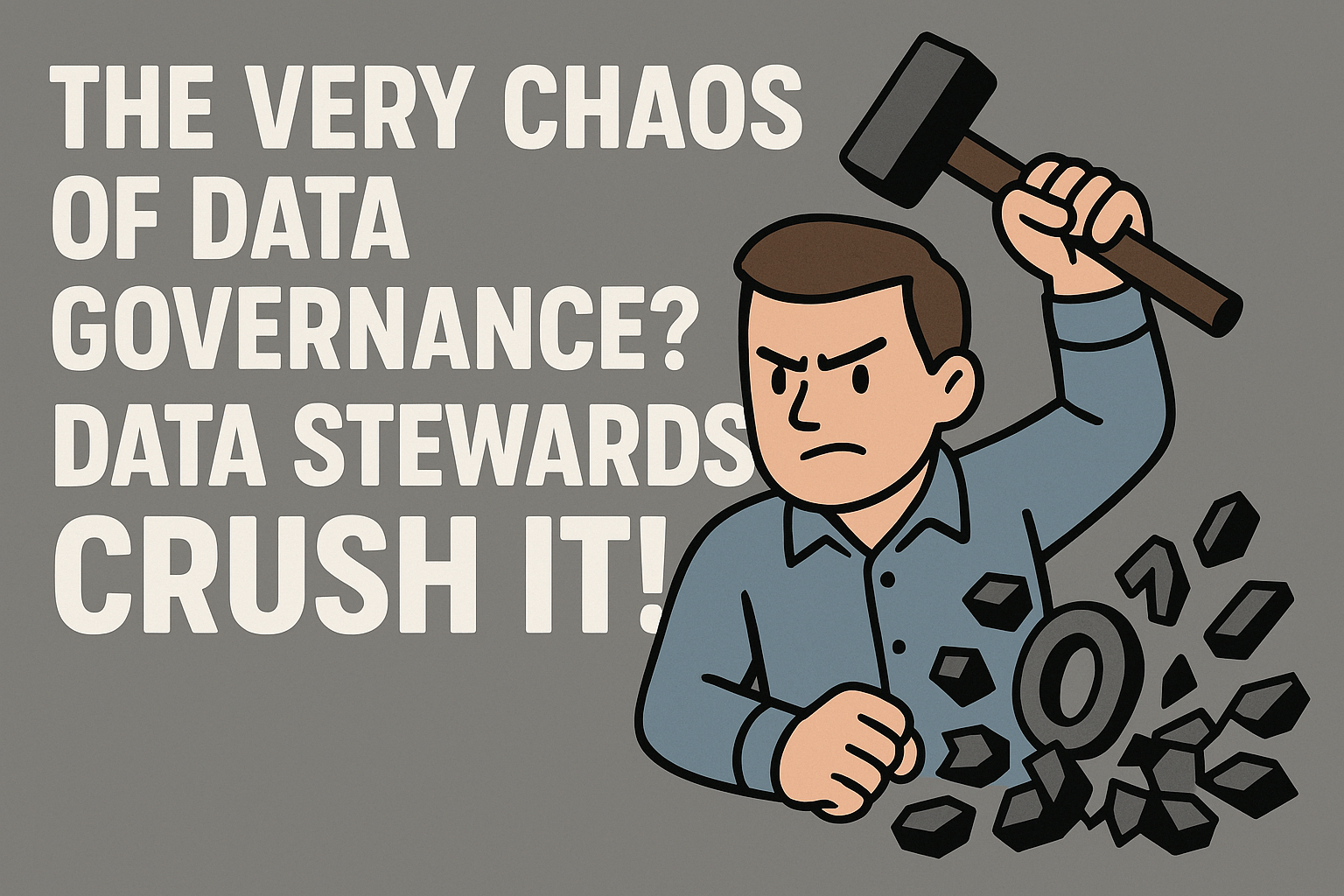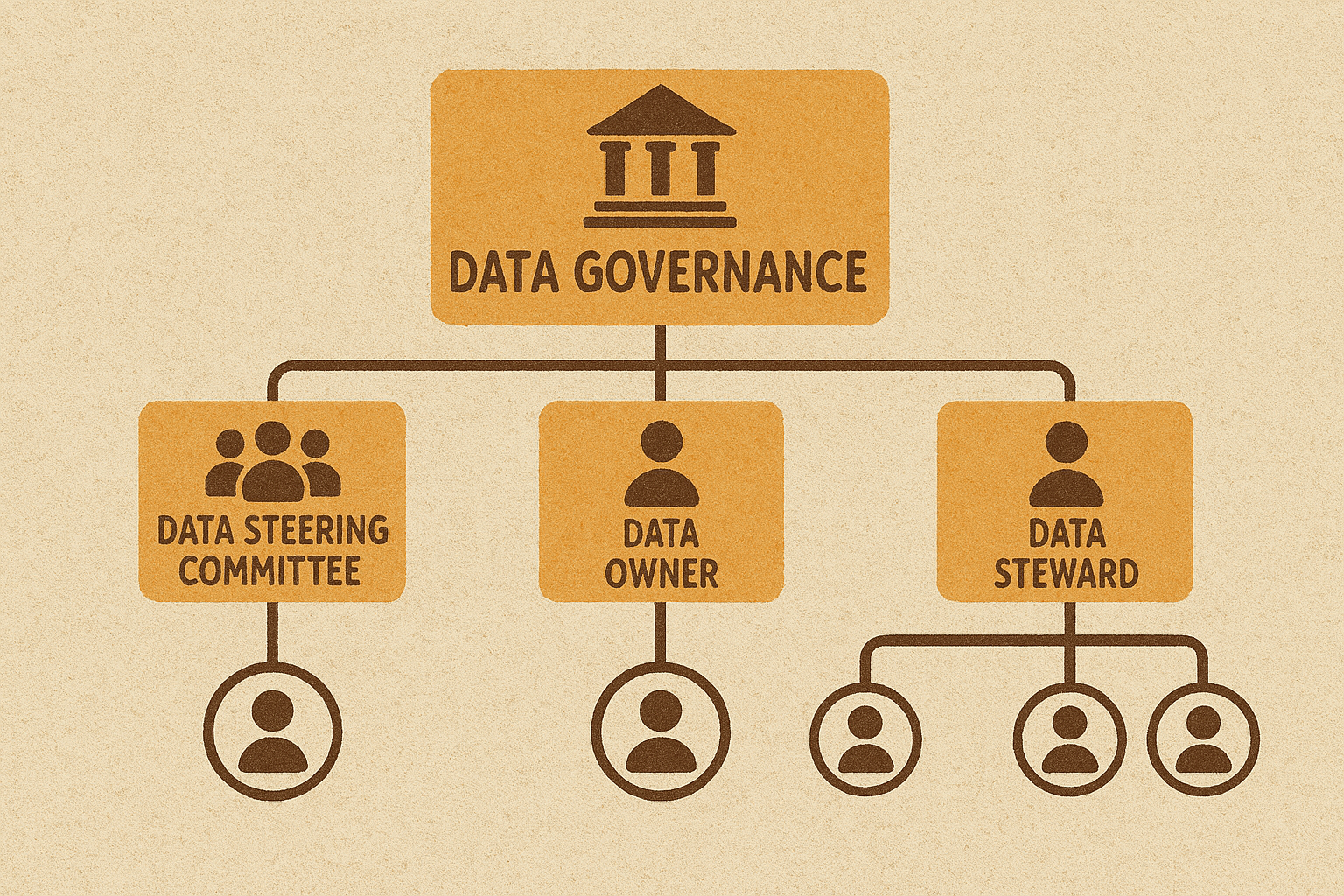Organizational Structure & Roles: Who Does What?
Data governance isn’t a solo game—it’s a team effort. Everyone needs a clear role, just like in a soccer team, where the goalkeeper, striker, and coach each have a specific job to make the team function smoothly.
The same applies to data governance.
Data Owners → The big decision-makers who set the direction and policies.
Data Stewards → The hands-on managers who ensure that data is well-maintained and usable.
For example, if customer addresses are incorrect, the Data Steward steps in to fix them. Meanwhile, the Data Owner decides the business rules for how customer data should be stored and used.
1 Why Are Roles Important?
I knew a company where, at first, no one wanted to take responsibility for data governance.
“Why should I do this?”
So no one did anything, and their data quickly became a chaotic mess.
Eventually, they established clear roles, and suddenly, everything started running smoothly.
In large companies, different teams may handle specific areas.
In small businesses, just one or two people may manage all governance tasks.
It’s like how a family divides chores—if Mom says,
“You handle dinner tonight,”
then you know exactly what to do. The same clarity is needed in a company
Let’s break down the key roles in data governance using an example from T Company.
 To make this clearer, here’s a conversation between a new employee and a senior team member discussing how a data governance organization should be structured. . New Employee: “I understand that organizing a governance structure is important, but can’t we just have one team that handles all the data?” Senior Employee: “Haha, if only it were that simple! But in reality, managing and utilizing data properly requires a systematic organization with different roles and responsibilities. Let me walk you through the key categories.” 1. Data Planning: Setting the Foundation What It Does: Identifies data needs and business use cases. Plans how to collect and use data effectively. Tracks emerging trends and technologies. Example: A retail company wanted to analyze customer shopping behaviors. The data planning team identified what data was needed and suggested additional data sources to improve customer insights. 2. Data Lifecycle Management: Storing & Handling Data What It Does: Determines where data should be stored. Designs ETL (Extract, Transform, Load) processes. Establishes data retention and disposal policies. Example: A company faced storage shortages due to excessive old data. The data lifecycle team archived unused data, solving the problem without impacting operations. 3. Data Standardization: Ensuring Consistency What It Does: Defines data classification frameworks. Establishes standard terminology and formats. Sets rules for data types and acceptable values. Example: A global company had different formats for customer data across locations. The standardization team unified these formats, greatly improving data usability. 4. Data Quality Management: Keeping Data Clean What It Does: Sets data quality metrics. Identifies and fixes errors in datasets. Ensures data is accurate and reliable. Example: A bank discovered account number errors. The data quality team caught and corrected these issues, preventing customer complaints. 5. Data Security & Privacy: Protecting Sensitive Data What It Does: Develops data protection policies. Manages data access controls. Implements privacy measures like anonymization. Example: A hospital implemented de-identification processes to secure patient records while allowing safe data analysis. 6. Access & Permission Management: Controlling Data Access What It Does: Defines who can access which data. Manages access requests and approvals. Monitors and audits data access activities. Example: A company found that former employees still had database access. The access management team revoked old permissions, preventing potential data breaches. 7. Governance Audits & Change Management: Keeping Policies Up to Date What It Does: Regularly reviews data and governance policies. Implements updates when regulations change. Example: When new data retention laws were introduced, the governance audit team updated storage policies to remain compliant. 8. System & Platform Management: Supporting the Infrastructure What It Does: Maintains data platforms and storage systems. Provides user training and technical support. Example: An IT company introduced a new data management platform, but employees struggled with it. The system management team conducted training sessions, ensuring smooth adoption. New Employee: “Wow, I didn’t realize there were so many different categories! Now I see that proper data governance requires multiple specialized teams.” Senior Employee: “Exactly! When you structure your data governance team properly, everything runs smoother and safer.” |

